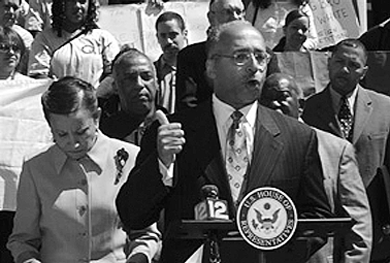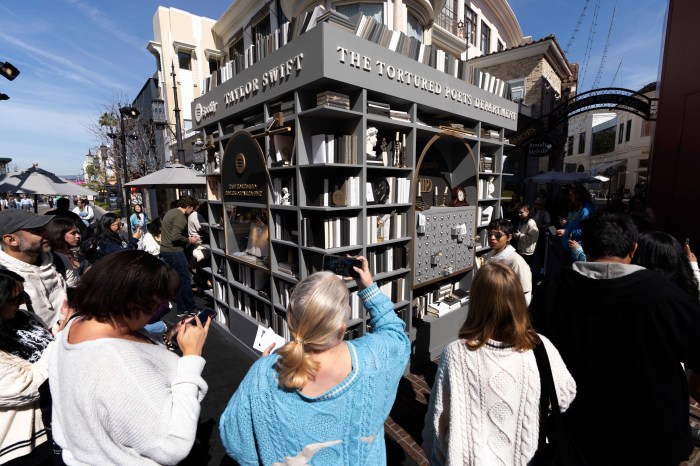Thompson report says outer boroughs shortchanged in Ryan White dollars
In a letter to New York City Health Commissioner Thomas R. Frieden dated April 27, city Comptroller William C. Thompson, Jr., raised concerns as to whether a major contractor providing $471 million in AID/HIV services was equitably distributing those funds across the five boroughs.
The comptroller’s letter was prompted by a review his office did of 34 subcontracts negotiated by Medical and Health Research Associates of New York City, Inc. (MHRA) to provide care and assistance in a number of areas, including legal services, supportive counseling and family stabilization, and treatment adherence.
With its $471 million contract, over three years, MHRA essentially steps into a role that otherwise could be played by the health department itself in locating qualified, local service providers to offer care that is funded through the city by the federal Ryan White CARE Act.
Thompson’s analysis focused only on the first $11 million subcontracted under a new agreement with MHRA, but those subcontracts have a significant impact on the distribution of assistance across the city—particularly in legal services, where there has been a dramatic decline in the availability of service sites in Brooklyn. There is also a disproportionately small percentage of funds allocated to that borough, Queens, and the Bronx.
“I am concerned that the contract, as administered, provides services financially and geographically disproportionate to the number of individuals across the city who have been affected,” Thompson’s letter stated, going on to charge, “A review by my staff has led me to conclude that the subcontracts were, in fact, awarded in an inequitable fashion.”
However, writing that, “It is not the intent of this office to deprive AIDS/HIV clients of receiving much needed services,” Thompson concluded his letter by noting that his office “registered” the MRHA agreement, which is the comptroller’s role in approving city contracts. Thompson’s aim was to serve notice on MHRA and the health department that he expected more proportional distribution of funds in future subcontract negotiations.
Thompson’s study included assessments of both the number of facilities funded in each borough and the dollar allocations to those subcontractors. Of all the cases of AIDS and HIV in the city, 31.2 percent are in Manhattan; 24.7 percent in Brooklyn; 21.8 percent in the Bronx; 13.5 percent in Queens; and only 1.8 percent in Staten Island. In its most recent subcontracting, MHRA has increased the average size of each agreement, so that the 34 new contracts are replacing 72 that have expired.
The comptroller looked at the number of zip codes where legal services subcontractors are sited and the overall borough dollar allocations. The number of such sites citywide fell from 43 to 33 under the new contract—but stayed nearly constant in Queens, the Bronx, and Staten Island. In Manhattan, the zip codes housing legal services sites fell from 16 to 12, but in Brooklyn, that number fell from nine to three.
In dollar allocations for legal services, Manhattan received in excess of 50 percent more than its AIDS/HIV caseloads would dictate and Staten Island more than 400 percent, while Brooklyn, Queens, and The Bronx were each allocated two thirds or less of what their caseloads would suggest.
In the allocation of funding for supportive counseling and family stabilization services, Staten Island received roughly seven times its proportional share; Manhattan nearly twice the amount based on its caseload; and Brooklyn just under 20 percent more than its AIDS and HIV diagnoses would suggest. No subcontractors located in either Queens or the Bronx received allocations for such services.
“It is not an acceptable outcome for over 35 percent of the citywide population of individuals affected by AIDS/HIVB to not have services, at all, in their borough,” Thompson wrote.
In the funding of treatment adherence support, Manhattan and Staten Island both received roughly twice their proportional shares, while the Bronx received just over three quarters of its share; Brooklyn, a bit more than half; and Queens only about one fifth.
Thompson’s letter noted with concern that MHRA officials, in a meeting with staff from the comptroller’s office, “indicated that it awarded the legal service subcontracts without regard for the number of sites in a borough or for the monetary value of the contract services awarded by borough.”
As a follow-up to that meeting, MHRA sent the comptroller’s office a letter providing several responses to Thompson’s concerns. First, the company explained that some of its subcontracting decisions were made either at the behest of the health department or in line with priorities established by the Human Services Planning Council of New York, an advisory group that establishes guidelines for the distribution of Ryan White money in the city. MHRA also noted that its contract with the city has no limitations on the size of the subcontracts it negotiates, justifying the fewer number of service providers participating.
The explanation that MHRA provided in its letter for “the percentage of clients from Brooklyn served by the Ryan White portfolio” is of particular interest. The company argued that “allocating costs by borough of the headquarters office is a misleading concept.” Two-thirds of the clients for what MHRA termed “citywide contracts” come from the outer boroughs. The company also pointed to research studies that show “that many people actually prefer to seeks services outside their home communities… because of the stigma attached to HIV.” Thus, Brooklyn, Queens, and Bronx residents might actually prefer accessing services in Manhattan. Only Staten Islanders would face potential hardships in doing so, according to this perspective, and that may explain the relative over-funding of services there.
Thompson, however, was not buying that rationale.
“Although Manhattan might receive a slightly higher proportion of funding due to ease of transportation and other factors, MHRA’s argument is not compelling in that it again contradicts the intention of [the contracting process] to ensure an ‘adequate geographical distribution of services.’”
MHRA did not respond to a request for comment as of press time.
The health department’s response to Thompson’s challenge was more general. Asked for a comment by Gay City News, a spokesperson sent an e-mail that reaffirmed that “people of color are disproportionately affected by the epidemic and thus most Ryan White funding is directed to communities of color,” and went on to state that “a competitive application process was undertaken for the first time in eight years that resulted in new contracts—-those that scored the highest points… The process rewarded high-scoring proposals while acknowledging the importance of locally-based, ethnically and geographically diverse services. The [process] resulted in services that meet people’s needs in each borough.”
On May 1, Thompson appeared with Congresswoman Nydia M. Velázquez, who represents portions of the Lower East Side as well as large swaths of Brooklyn and Queens, at a City Hall press conference to discuss his report’s findings.
“The administration’s recent reallocation of Ryan White federal emergency AIDS money in New York resulted in 22 out of 32 grants being given to Manhattan-based agencies,” Velázquez said. “However, the epidemic rings just as loud here in Brooklyn, and in Queens and the Bronx. This shift in funds is leaving these areas without access to supportive family and legal services, and treatment adherence programs.”
gaycitynews.com


































